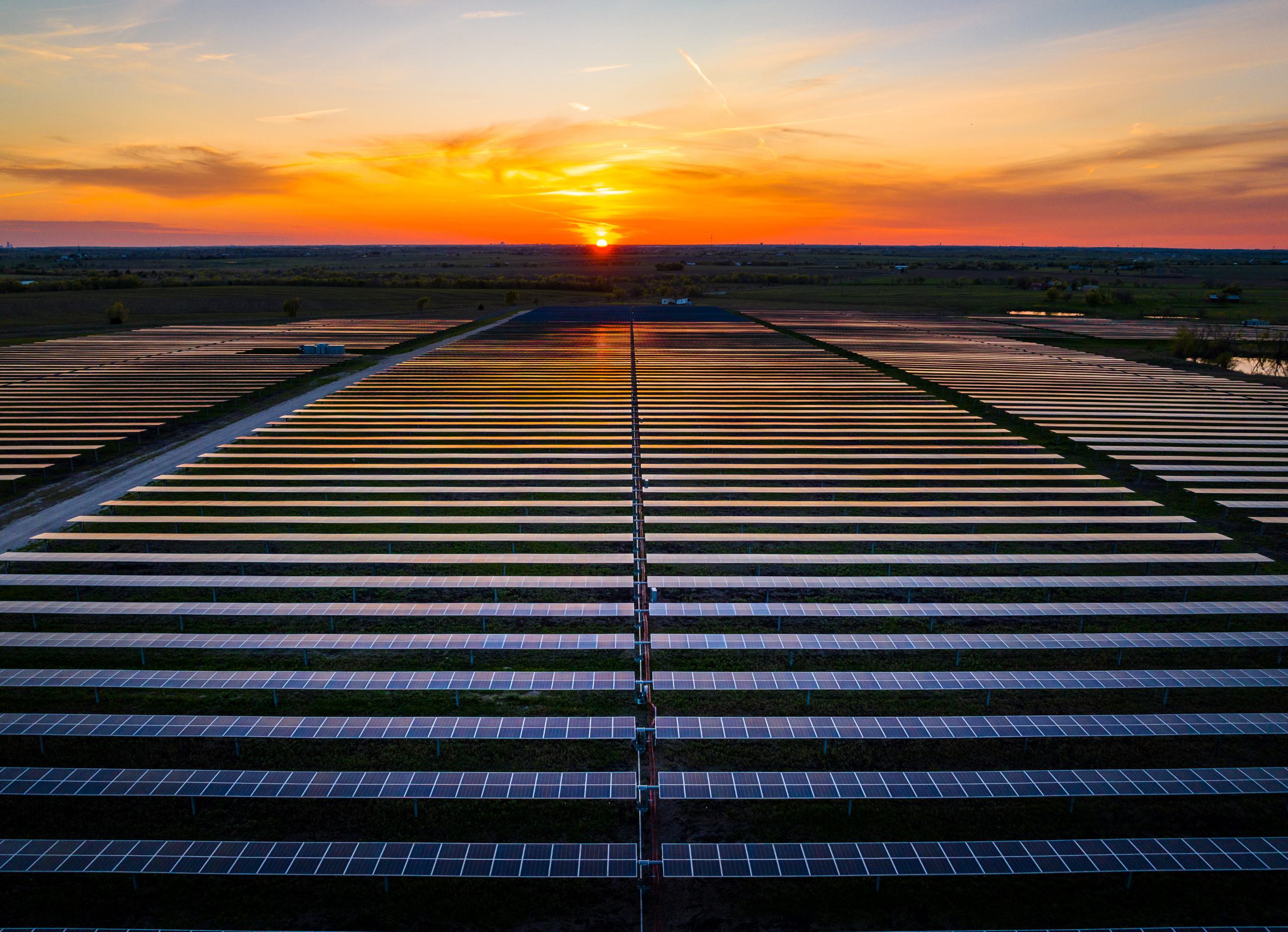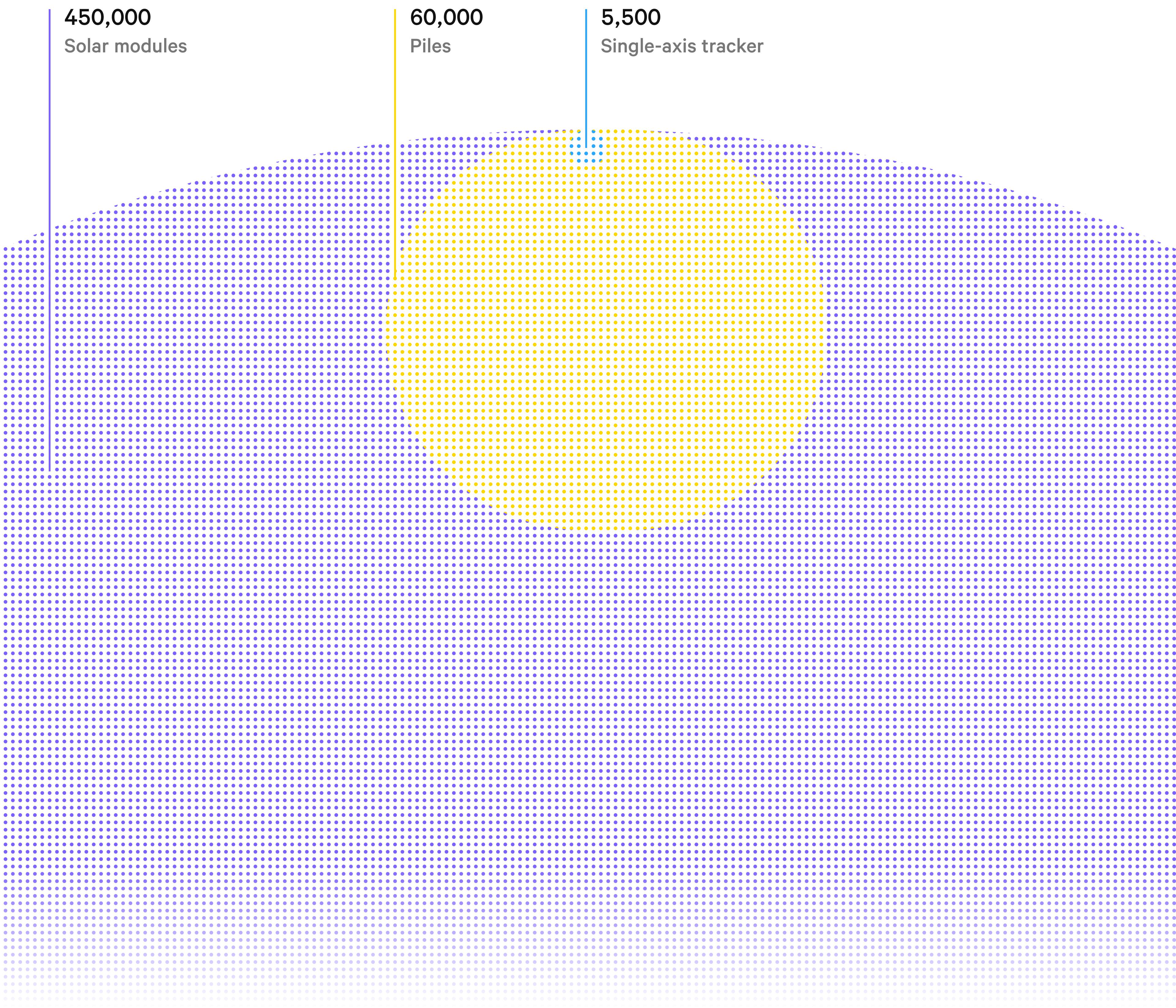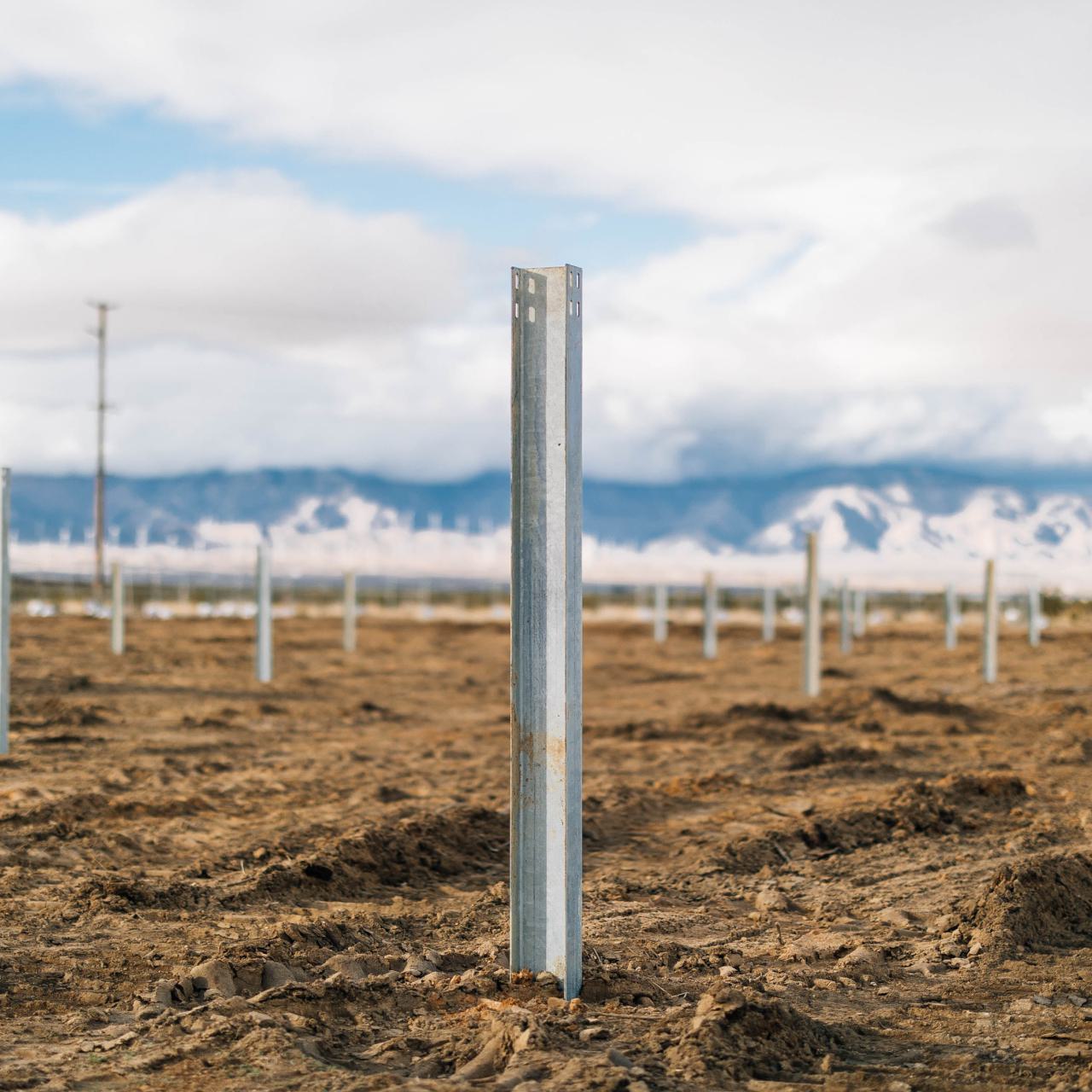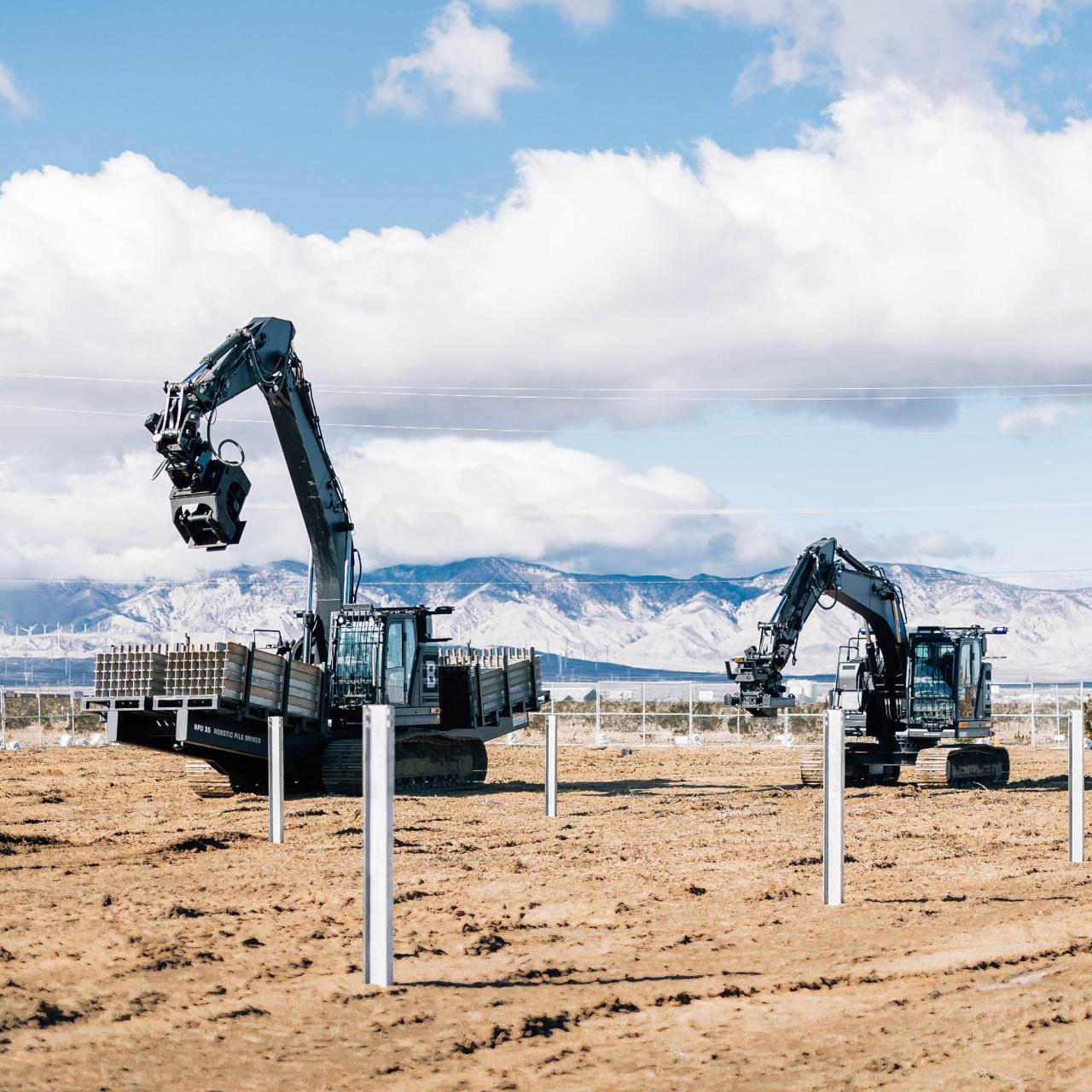Why Solar
Energy for Everyone

The Rise of Solar
The Lowest Cost Source of Energy
$319

The Workforce Gap
Utility-scale solar is vast. To successfully transition to a decarbonized grid, the industry needs to recruit new talent and equip them with the skills and technologies to accelerate solar deployment.
Building a 200 MW Farm

Labor Needs to Only Grow
140,000
Autonomy Bridges the Workforce Gap
Robots offer a way to bring clean energy to everyone. Every solar power plant requires tough, repetitive work that can take months or years to complete using traditional means and methods. With autonomy, contractors can leverage both their team’s field experience and cutting-edge AI technology to ease the pressures of a tight workforce.
Safety
Speed
Scalability




Utility solar construction is ripe for disruption, and automation will be critical to get us to our clean energy goals. Automation in solar farm construction — for example pile driving — frees up skilled labor to focus on more complex tasks and increases the speed and accuracy of building power infrastructure.Tyler Parker, as quoted in ForbesGlobal Renewable EnergyBlack & Veatch

Graph values less than 2% are not depicted.
-
SEIA, “Solar’s Share of New Capacity has Grown Rapidly.” (Accessed June 23, 2022).
-
Lazard, “Levelized Cost Of Energy, Levelized Cost Of Storage, and Levelized Cost Of Hydrogen.” (Accessed June 23, 2022).
-
Numbers represent total materials and labor required for a 200 MW solar farm. Calculations are based on Built’s internal database of projects in the United States that utilize Nextracker tracking systems and First Solar PV modules.
-
SEIA, “National Solar Jobs Census 2022.” (Accessed Dec 4, 2023). Calculation includes projected calculations using SEIA data and projects from NREL’s Solar Future Study data.


